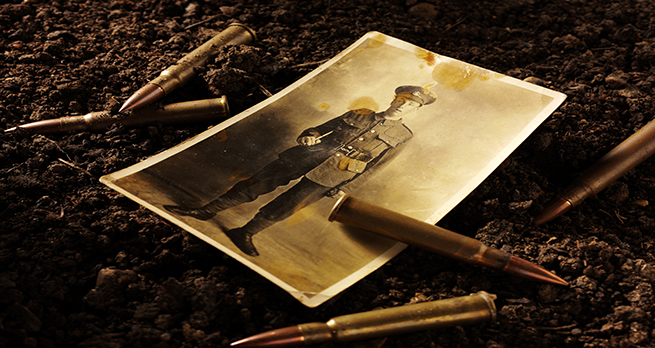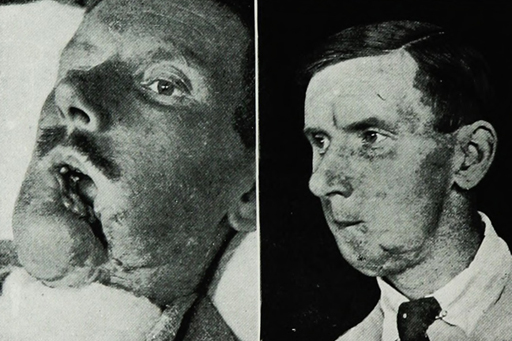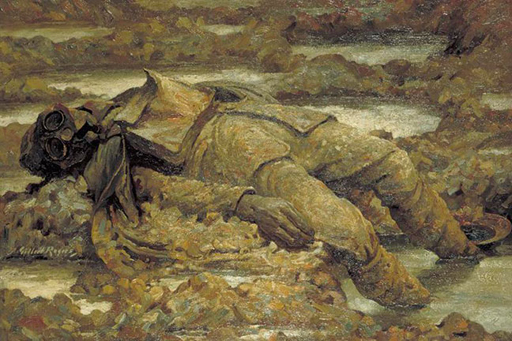1.1.1 Physical injuries
Figure 1 is a powerful reminder of the terrible injuries that soldiers could sustain.
Innovations such as the steel helmet, which one might consider a useful device for safeguarding soldiers, actually made such facial injuries more likely. As the war progressed, survival rates increased due to better protection, but at a terrible price. It is not surprising that at the peace negotiations in Paris in 1919, the French presented the German delegation with a small number of severely disfigured men, so-called gueules cassées (broken faces), to deliver the message that untold harm had been caused by those they considered responsible for starting the war.
Soldiers lost limbs from shell explosions and machine gun attacks in unprecedented numbers. In Germany, for example, around 67,000 men had lost limbs by the end of the war, and this put pressure on the medical establishment to improve the design and functionality of prostheses. If men could not be returned to the front, it was hoped that they could at least return to the workplace – doctors therefore developed a variety of artificial limbs that would allow injured men to undertake various forms of industrial labour. These limbs, however, were often little more than specialised industrial tools, and they were in no way designed to hide a veteran’s disability.
Soldiers were also blinded and choked by a new and terrifying weapon: gas. This painting, Gassed, by the British artist Gilbert Rogers (Figure 2), depicts in gruesome detail the horrific wounds caused by this most modern of weapons. Soldiers would suffer for many years from the effects of gas, and many would die after the war from injuries sustained during gas attacks.


